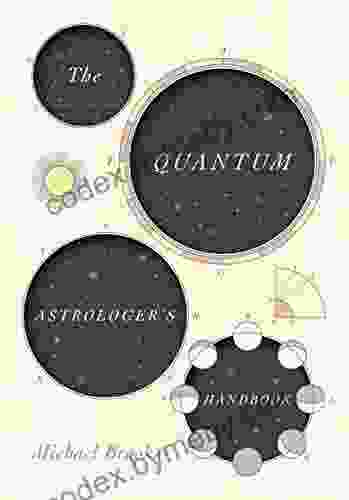Unveiling the Enigma: A Journey Through the History of Renaissance Mathematics That Birthed Imaginary Numbers

As we delve into the annals of mathematical history, one pivotal era stands out: the Renaissance. A time of intellectual awakening and scientific revolution, the Renaissance witnessed a profound transformation in the realm of mathematics. Among its many remarkable contributions, the birth of imaginary numbers ranks as one of the most enigmatic and pivotal.
Initially met with skepticism and resistance, imaginary numbers have since proven to be an indispensable tool in countless scientific and engineering disciplines. Their ability to extend the boundaries of mathematical possibility has revolutionized our understanding of the world around us, from the complex interactions of quantum mechanics to the intricate designs of modern architecture.
4.3 out of 5
| Language | : | English |
| File size | : | 453 KB |
| Text-to-Speech | : | Enabled |
| Screen Reader | : | Supported |
| Enhanced typesetting | : | Enabled |
| Word Wise | : | Enabled |
| Print length | : | 240 pages |
The Precursors: Dawn of a New Era
The concept of imaginary numbers did not emerge abruptly. Centuries of groundbreaking mathematical advancements paved the way for their eventual discovery. In ancient Greece, mathematicians such as Euclid and Archimedes delved into the study of geometry and number theory, laying the foundation for a rigorous mathematical framework.
As the Renaissance dawned, mathematicians began to challenge traditional boundaries and explore new mathematical ideas. The Italian mathematician Luca Pacioli, known for his seminal work on accounting, made significant contributions to algebra. His book, "Summa de Arithmetica, Geometria, Proportioni et Proportionalita" (1494),contained the first known use of the symbol "√-1" to represent the square root of a negative number.
Gerolamo Cardano: Embracing the Unfamiliar
In the mid-16th century, Italian mathematician Gerolamo Cardano took the concept of imaginary numbers to new heights. In his groundbreaking treatise, "Ars Magna" (1545),Cardano boldly acknowledged the existence of these mysterious quantities, albeit with some hesitation.
Cardano's work marked a turning point in the development of imaginary numbers. Despite their unconventional nature, he recognized their legitimacy as mathematical objects and explored their properties, opening the door for further investigation.
Rafael Bombelli: Expanding the Mathematical Landscape
Building upon Cardano's pioneering efforts, Italian mathematician Rafael Bombelli took the study of imaginary numbers to even greater depths. In his book, "Algebra" (1572),Bombelli provided the first systematic treatment of imaginary numbers, defining their fundamental operations and demonstrating their practical applications.
Bombelli's work was pivotal in establishing the concept of imaginary numbers within the mathematical community. He showed that these enigmatic quantities could be manipulated and used to solve complex equations, paving the way for their widespread adoption in mathematical thought.
Beyond the Renaissance: A Legacy of Progress
The discovery of imaginary numbers in the Renaissance had a profound and long-lasting impact on the development of mathematics. As mathematicians grappled with the implications of these unusual quantities, new mathematical tools and ideas emerged.
In the 17th century, René Descartes introduced Cartesian coordinates, enabling the geometric representation of complex numbers. Leonhard Euler later developed the notion of the complex exponent and established the mathematical identity eiπ + 1 = 0, known as Euler's identity.
The 19th century saw the emergence of complex analysis, a branch of mathematics dedicated to the study of functions with complex variables. This field has proven invaluable in areas such as quantum mechanics, fluid dynamics, and electromagnetism.
: A Bridge to the Unknown
The history of imaginary numbers is a testament to the power of human curiosity and the relentless pursuit of knowledge. From their humble beginnings in the Renaissance to their central role in modern science and engineering, imaginary numbers have revolutionized our understanding of the universe.
They have extended the boundaries of mathematical possibility, enabling us to solve previously intractable problems and explore phenomena that were once beyond our comprehension. As we continue to push the frontiers of scientific knowledge, imaginary numbers will undoubtedly remain an indispensable tool for generations to come.
4.3 out of 5
| Language | : | English |
| File size | : | 453 KB |
| Text-to-Speech | : | Enabled |
| Screen Reader | : | Supported |
| Enhanced typesetting | : | Enabled |
| Word Wise | : | Enabled |
| Print length | : | 240 pages |
Do you want to contribute by writing guest posts on this blog?
Please contact us and send us a resume of previous articles that you have written.
 Book
Book Novel
Novel Page
Page Chapter
Chapter Text
Text Story
Story Genre
Genre Reader
Reader Library
Library Paperback
Paperback E-book
E-book Magazine
Magazine Newspaper
Newspaper Paragraph
Paragraph Sentence
Sentence Bookmark
Bookmark Shelf
Shelf Glossary
Glossary Bibliography
Bibliography Foreword
Foreword Preface
Preface Synopsis
Synopsis Annotation
Annotation Footnote
Footnote Manuscript
Manuscript Scroll
Scroll Codex
Codex Tome
Tome Bestseller
Bestseller Classics
Classics Library card
Library card Narrative
Narrative Biography
Biography Autobiography
Autobiography Memoir
Memoir Reference
Reference Encyclopedia
Encyclopedia Chris Mcintyre
Chris Mcintyre Mostyn Heilmannovsky
Mostyn Heilmannovsky Chris Tomlinson
Chris Tomlinson Chris Donaldson
Chris Donaldson Sarah Waters
Sarah Waters Claire Josephine
Claire Josephine Stacey Little
Stacey Little Clara Kramer
Clara Kramer Elisabeth Robson
Elisabeth Robson Clair Lasater
Clair Lasater Gary Richter Dvm
Gary Richter Dvm Chris Hoke
Chris Hoke Christopher Busta Peck
Christopher Busta Peck Lisa Caprelli
Lisa Caprelli Christine Duts
Christine Duts Susan Fletcher
Susan Fletcher Claire L Evans
Claire L Evans Lorraine Allman
Lorraine Allman Christoph Roser
Christoph Roser Deborah Vinall Psyd Lmft
Deborah Vinall Psyd Lmft
Light bulbAdvertise smarter! Our strategic ad space ensures maximum exposure. Reserve your spot today!

 Eugene ScottEducational Inclusion As Action Research Interpretive Discourse: A Catalyst...
Eugene ScottEducational Inclusion As Action Research Interpretive Discourse: A Catalyst...
 Stephen FosterAn Exceptional Children Guide To Touch: Unlocking the Power of Sensory Input...
Stephen FosterAn Exceptional Children Guide To Touch: Unlocking the Power of Sensory Input... Clarence MitchellFollow ·15.7k
Clarence MitchellFollow ·15.7k Glenn HayesFollow ·15k
Glenn HayesFollow ·15k Spencer PowellFollow ·11.8k
Spencer PowellFollow ·11.8k Langston HughesFollow ·17.5k
Langston HughesFollow ·17.5k Jimmy ButlerFollow ·15.9k
Jimmy ButlerFollow ·15.9k William WordsworthFollow ·7.7k
William WordsworthFollow ·7.7k Dakota PowellFollow ·5.2k
Dakota PowellFollow ·5.2k Mark MitchellFollow ·8.5k
Mark MitchellFollow ·8.5k

 Rick Nelson
Rick NelsonThe Power of Positivity: 51 Motivational Quotes to...
In the tapestry of life, we encounter...

 Lee Simmons
Lee SimmonsThe Indian War of 1864: A Devastating Conflict in the...
The Indian War of 1864 was a brutal...

 Eddie Bell
Eddie BellQueen: The Unauthorized Biography: Unraveling the Secrets...
Prepare to delve into the captivating...

 Dion Reed
Dion ReedUnveiling the Imperfect Gems of Trauma and...
In the tapestry of...

 Desmond Foster
Desmond FosterThirty-Six Years in the Rockies: A Timeless Masterpiece...
A Journey Through Time and...
4.3 out of 5
| Language | : | English |
| File size | : | 453 KB |
| Text-to-Speech | : | Enabled |
| Screen Reader | : | Supported |
| Enhanced typesetting | : | Enabled |
| Word Wise | : | Enabled |
| Print length | : | 240 pages |










